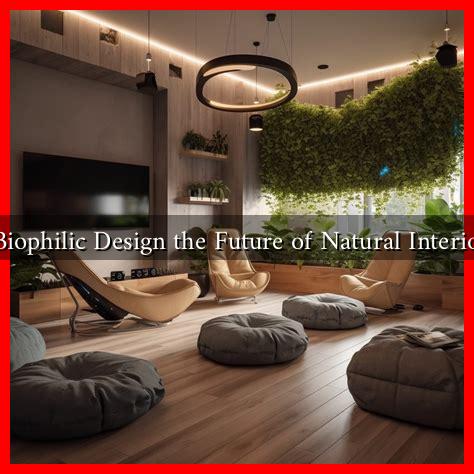-
Table of Contents
Is Biophilic Design the Future of Natural Interiors?
In an era where urbanization and technology dominate our lives, the concept of biophilic design is gaining traction as a transformative approach to interior spaces. Biophilic design seeks to connect people with nature, enhancing well-being and productivity. This article explores the principles of biophilic design, its benefits, and its potential to shape the future of natural interiors.
Understanding Biophilic Design
Biophilic design is rooted in the idea that humans have an inherent connection to nature. Coined by American biologist Edward O. Wilson in the 1980s, the term “biophilia” refers to the innate affinity humans have for the natural world. Biophilic design incorporates natural elements into built environments, creating spaces that promote health, happiness, and productivity.
Key Principles of Biophilic Design
Biophilic design can be broken down into several key principles that guide its implementation:
- Natural Light: Maximizing natural light in interiors can improve mood and reduce stress.
- Natural Materials: Using materials like wood, stone, and plants fosters a connection to the natural world.
- Views of Nature: Incorporating windows or artwork that showcase natural landscapes can enhance well-being.
- Indoor Plants: Adding greenery not only purifies the air but also creates a calming atmosphere.
- Water Features: The sound and sight of water can evoke tranquility and relaxation.
The Benefits of Biophilic Design
Research has shown that biophilic design can have profound effects on physical and mental health. Some of the key benefits include:
- Improved Well-Being: Studies indicate that exposure to natural elements can reduce stress and anxiety levels.
- Enhanced Productivity: Workspaces designed with biophilic principles have been shown to increase employee productivity by up to 15%.
- Better Air Quality: Indoor plants can improve air quality, leading to fewer respiratory issues and allergies.
- Increased Creativity: Natural environments stimulate creativity and problem-solving skills.
Case Studies: Successful Implementations of Biophilic Design
Several organizations and projects have successfully integrated biophilic design principles, showcasing its effectiveness:
- The Edge, Amsterdam: This office building features extensive greenery, natural light, and open spaces, resulting in a 97% employee satisfaction rate.
- Amazon Spheres, Seattle: These glass domes house over 40,000 plants, providing employees with a unique workspace that fosters creativity and collaboration.
- One Central Park, Sydney: This residential complex incorporates vertical gardens, enhancing the aesthetic appeal and promoting biodiversity.
The Future of Natural Interiors
As society becomes increasingly aware of the importance of mental health and well-being, biophilic design is poised to become a cornerstone of interior design. The integration of natural elements into our living and working spaces is not just a trend; it is a necessity for fostering healthier environments.
According to a report by the World Green Building Council, buildings designed with biophilic principles can lead to a 20% increase in occupant satisfaction and a 15% increase in productivity. As more architects and designers embrace these principles, we can expect to see a shift towards more sustainable and health-focused interiors.
Conclusion
Biophilic design represents a significant shift in how we approach interior spaces. By prioritizing our connection to nature, we can create environments that enhance well-being, productivity, and creativity. As urbanization continues to rise, the need for natural interiors will only grow stronger. Embracing biophilic design is not just about aesthetics; it is about creating spaces that nurture our physical and mental health. The future of natural interiors is bright, and biophilic design is leading the way.
For more insights on biophilic design and its impact on interiors, visit World Green Building Council.


